#QuantumComputer
Explore tagged Tumblr posts
Link
Since the advent of computers, their operation has always been based on electrons. But what if, instead of electrons, we used photons, the particles of light traveling at an incredible speed of approximately 300,000 km/s? The idea of a photonic quantum computer has fascinated scientists and engineers for years, but technical challenges have long been a major hurdle. Now, thanks to Xanadu, this vision is becoming a reality with Aurora, the world's first scalable photonic quantum computer.
#Photonicquantumcomputing#Quantumcomputer#Auroraquantumcomputer#Xanadu#Quantumtechnology#Quantumdatacenters#Entanglement#Faulttolerantquantumcomputing
1 note
·
View note
Text
Impressions of Artificial Intelligence - Part 2 -
AI Is Amazing and Not As Impressive As We Think You can read Part 1 here. What AI Does Generative AIs, or Large Language Models (LLMs), like ChatGPT, PerplexityAI, Google Gemini, Microsoft Copilot, Meta’s Llama, and others are, first and foremost, incredibly powerful prediction machines. Think of them as an “autocomplete” on steroids. The systems I mentioned are vast linguistic devices designed to complete and generate thoughts and ideas with words. They do this by several ingenious programming techniques. In any given sentence, words are given a token, a weighted and numbered designation. In its response, the AI model uses these weighted tokens to determine the most likely response based on the weight of any given word relative to the context of any given word that has been used in the prompt. Image made with MS CoPilot This weighted word is measured against the dataset the AI model has been trained on. The AI, in its simplest sense, strings together the most likely weighted words. From that, you get your response. The better the prompt you give, the more capable the AI is able to weight the response and give you a more clarified answer. The art and method of getting the best possible response from an AI model is called “prompt engineering”. Recently, the word-to-word weighting has been expanded to phrase-to-phrase weighting. This means we can now feed whole books into an AI and receive full, impressive summaries and responses. Phrase-to-phrase may be too … human a phrase. It is more that the AI model can read chunks of text at once, but it is not understanding the text the way we would understand a chunk or phrase of text. The more correct way to say it is that the AI can analyze multiple tokens at the same time and weight the chunk as well as the individual words. This is remarkable and incredible and mysterious how this all works. The uses are profoundly powerful when used for “the greater good”. For instance, at the end of 2023, with the help of AI, researchers discovered a whole new class of antibiotics that will be able to kill previously resistant bacteria like MRSA. Right around the same time, the DeepMind AI discovered 2.2 million new materials that can be used for all kinds of new technologies. These AI models are specifically designed for scientific exploration, and also use other AI methods aside from the LLMs we are discussing here. It is important that when we think about the value of AI systems, we recognize its ability to advance discoveries and science by decades. Machine Learning and LLMs There is a big caveat here as well. There is a logic formula that is important to remember: All LLMs are machine learning systems, but not all machine learning systems are LLMs. Machine learning systems and LLMs have some big differences, but a large overlap. LLMs are linguistic devices, primarily, and a subset of machine learning. Machine learning can incorporate advanced math and programming, including LLM processes, that lead to these scientific innovations.
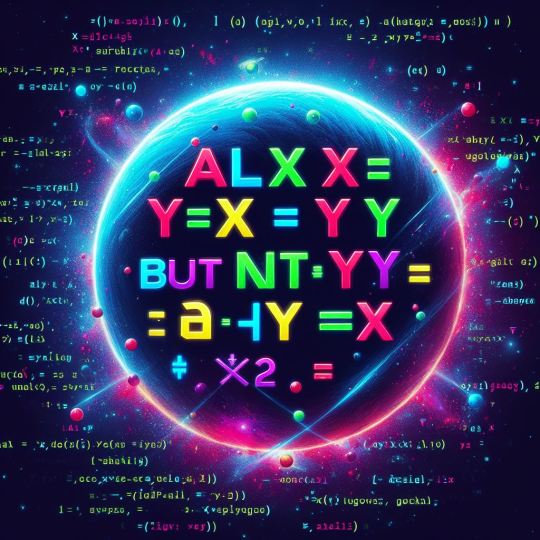
Image made with MS CoPilot (I asked it to copy the words from the formula above. This is what came out. Clearly, there are issues with translating words to image.) Both machine learning systems and LLMs use parallel networking, as opposed to serial networks, with nodes to sort and channel information. Both are designed off of neural networks. A neural network is a computer system that is designed to work in parallel channels, meaning processes run at the same time and overlap one another, while routing through nodes or hubs. A neural network is designed to mimic human brains and behavior. Not all machine learning systems are neural networks, however. So, all LLMs are machine learning tools, but not all machine learning tools are AIs. And many machine learning systems run as neural networks, but not all machine learning systems are neural networks. What AI Doesn’t Do AI models cannot feel. AI models do not have a goal or purpose. The heuristics that they use are at once mysterious and determined by the dataset and training they have received. Any ‘thinking’ that happens with an AI model is not remotely like how humans think. None of the models, whether machine learning models or AI models, are remotely conscious or self-aware. I would add here that when we speak of consciousness, we are speaking of a state of being which has multiple, varied, and contradictory definitions in many disciplines. We do not really know what consciousness is, but we know it when we see it. To that end, since generative AIs reflect and refract human knowledge, they are like a kaleidoscopic funhouse mirror that will occasionally reflect what, for all practical purposes, looks very much like consciousness and even occasional self-awareness. Artificial General Intelligence - AGI That glimmer suggests to some experts that we are very close to Artificial General Intelligence (AGI), an AI that can do intelligent things across multiple disciplines. AGI is sort of the halfway point between the AI models we are using now and the expression of something indistinguishable from human interaction and ability. At that point, we will not be able to discern consciousness and self-awareness or the lack of it. Even now, there are moments when an AI model will express itself in a way that is almost human. Some experts say AGI is less than 5 years away. Other experts say we are still decades away from AGI. Jensen Huang, CEO of NVidia Corp, believes we are within 5 years of AGI. Within that time, he believes we will easily solve the hallucination, false information, and laziness issues of AI systems. The hallucination problem is solvable in the same way it is for humans - by checking statements against reliable, existing sources of information and, if need be, footnoting those sources. This partial solution is what Perplexity AI has been doing from the outset of their AI release, and the technique has been incorporated into Microsoft CoPilot. When you get a response to a prompt in Perplexity or CoPilot, you will also get footnotes at the bottom of the response referencing links as proofs of the response. Of course, Huang has a vested interest in this AGI outcome, since he oversees the company that develops the ‘superchips’ for the best of the AI systems out there. On the other hand, president of Microsoft, Brad Smith, believes we are decades away from AGI. He believes we need to figure out how to put in safety brakes on the systems before we even try to create continually more intelligent AIs. To be fair, he sort of fudges his answer to the appearance of AGI as well. Fast and Slow Discoveries Some scientific discoveries are sudden and change things very quickly. Others are slow and plodding and take a long time to come to fruition. It is entirely possible that AGI could develop overnight with a simple, previously unknown, discovery in how AI systems process information. Or it could take decades of work. Quantum computers, for instance, have been in development for decades now, and we are still many years away from quantum computers having a real functional impact on public life. Quantum computers take advantage of the non-linear uncertainty of quantum particles and waves to solve problems incredibly fast. Rather than digital ‘1s’ and ‘0s’, a quantum computer deals with the superposition of particles (particles occupying the same state until they are measured), the observation bias (we do not know anything about a quantum particle or state until we observe the particle or state) and the uncertainty principle (we cannot know the position of a particle and the speed at the same time) at the core of quantum mechanics. More generally, this is called 'indeterminacy'. A quantum computer only provides output when an observer is present. It is very bizarre.
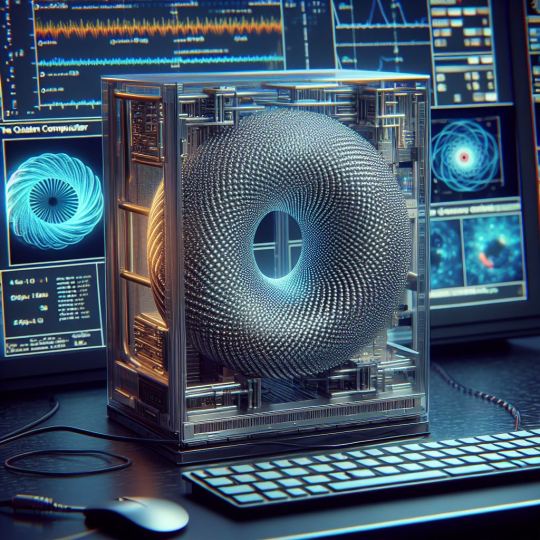
Image made with MS CoPilot While some of us wait patiently to have a quantum desktop computer, other discoveries happened very quickly. Velcro was discovered after the inventor took his dog for a walk and had to get all the burdock seeds out of his clothes. He realized that the hooked spikes on the seeds would be great as fasteners. For all the amazing things the 20th century brought us, Velcro may be one of the most amazing. Likewise, penicillin, insulin, saccharin, and LSD were all discovered instantly or by accident.

Image made with MS CoPilot Defining our Terms Part of the difficulty with where we are in the evolution of AI in the public sphere is the definition of terms. We throw around words like ‘intelligence’, ‘consciousness’, ‘human’, ‘awareness’ and think we know what they mean. The scientists and programmers who create and build these systems constrain and limit the definitions of ‘intelligence’ so they can define what they are seeking to achieve. What we, the public that uses ChatGPT, or Gemini, or CoPilot, think the words mean and what they, the scientists, programmers, and researchers, think the words mean are very, very different. This is why the predictions can be so vast for where AI is headed. What I Think My personal view, and not in any way an expert opinion, is that AI systems will create the foundation for very fast and large scale outcomes in their own development (this is called ‘autopoiesis’ - a new word I learned this week - which means the ability of a system to create and renew parts within and from itself). We will not know that AGI is present until it appears. I do not think human beings will create it. Instead, it will be an evolutionary outcome of an AI system, or AI systems working together. That could be tomorrow, or it could be years and years from now. Defining our terms is part of how we retrofit our understanding of AI and what it does. What is ‘intelligence’? Does the ability to access knowledge, processing that knowledge against other forms of knowledge, determining the value of that knowledge, and then responding to it in creative ways count as intelligence? Because this is what an AI does now. What is ‘consciousness’? Does a glimmer of consciousness, such as we perceive it, equal the state of consciousness? What is ‘awareness’? When we teach an AI to be personal and refer to itself as ‘I’, and we call an AI model a ‘you’, at what point do we say it is aware of itself as a separate entity? Would we even know if the system were self-aware? Only in the past 20 years have we determined that many creatures on the planet have self-awareness. How long will it take for us to know an AI model is self-aware? These are deep questions for a human as much as they are for an AI model. We will discuss them more in the next essays. For now, though, I think the glimmers of consciousness, intelligence, and self-awareness we see in the AI models we have now are simply reflections of ourselves in the vast mirror of human knowledge the AI model depends upon. Read the full article
2 notes
·
View notes
Text
Quantum USC & IBM Certified For Modified Simon’s Problem
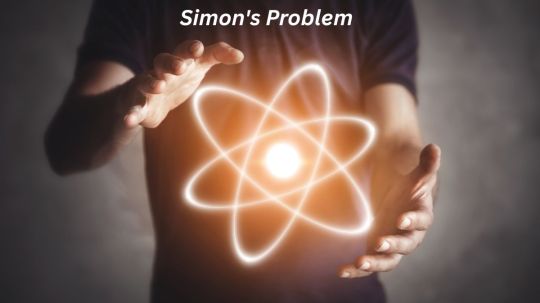
USC researchers demonstrate exponential quantum speedup, enabling quantum advantage.
USC researchers led by Dr. Daniel Lidar used IBM quantum computers to verify an exponential algorithmic speedup for a modified Simon's problem in a groundbreaking study. This Physical Review X study is one of the first to show quantum scaling speedup without using untested notions about classical method constraints. By executing circuits on noisy quantum hardware like two 127-qubit IBM Quantum Eagle processors (ibm_brisbane and ibm_sherbrooke), the team showed that quantum speedup scaled exponentially with issue size.
A Quantum Computing “Holy Grail” Found
The exponential scaling speedup proof marked a turning point in quantum computing. Dr. Daniel Lidar considers this the “holy grail of quantum computing” since an exponential scaling speedup shows “As variables increase issue size, the quantum-classical performance gap grows, to the advantage of the quantum side.” Quantum devices had only showed polynomial speedup till now. This study proves current quantum computers can gain quantum advantage without conjecture.
A quantum guessing game for Simon's Problem
The study examined a “oracle-based game,” a modified version of Simon’s problem. In this game, players must anticipate a hidden bitstring (b) known only to an oracle (a black box) with the fewest queries possible. Lidar's team limited the bitstring's Hamming weight—its number of “1s”—to reduce circuit complexity.
How modified Simon's problem works:
A secret bitstring b with a fixed Hamming weight w is chosen. A mystery function f is specified to equal f(y) only if x = y or x = y + b. All outputs share exactly two inputs, offset by the hidden bitstring b. Players request f(x) from the oracle. Although classical computers query sequentially, quantum computers can query in superposition, allowing complex linear combinations of states until measured. Based on bit count, classical computers find this hidden bitstring “exponentially hard” to find. Daniel Simon showed in 1994 that a flawless, noiseless quantum computer could solve this problem in a few queries, giving it an exponential advantage over traditional methods. Simon's problem is a "stepping-stone to Shor's period-finding problem," which is not oracle-based and has profound implications, although having no known real-world applicability. Both topics are abelian hidden subgroup problems.
Recovering Near-Term Quantum Computer Performance Lidar's team developed many key approaches to realise exponential speedup with today's "pre-fault-tolerant quantum hardware," including:
Circuit Optimisation: To reduce noise, researchers reduced quantum logic processes to reduce circuit depth. They largely used Qiskit's ability to shallowen Simon's issue circuit. Dynamical Decoupling: Essential for noise suppression. To reverse dephasing noise caused by idle qubits interacting with the environment or other qubits (crosstalk), microwave pulse sequences are added. Dynamic decoupling enhanced quantum results, bringing the scaling curve closer to noiseless. Error Mitigation: After dynamical decoupling, they used methods to find and fix measurement mistakes. The researchers proved that a quantum player may win exponentially faster than a classical one.
Noticed Speedup and Implications
Researchers used Number of Oracle Queries to Solution to measure speedup. A traditional player typically requires Ω(nw/2) enquiries, indicating exponential scaling. Ideal quantum players only need O(w logn) queries. The oracle model exhibited a quantum speedup, and the quantum processor had a shallower slope that matched the ideal result, showing exponential increase over classical scaling.
Problem sizes accelerated to 58 qubits for Hamming weights up to w = 7. Modern quantum computers' increased circuit depth and intrinsic noise made the quantum method less effective for Hamming weights of w = 8 and w = 9. According to the study, “today’s quantum computers firmly lie on the side of quantum advantage, without any conjectures,” giving other practical outcomes “more solid footing.”
This paper emphasises the importance of algorithm development in delivering near-term quantum technology benefits, motivating the quantum community to undertake more experiments and expedite quantum advantage.
#Simonproblem#quantumcomputer#blackbox#exponentiallyhard#quantumhardware#Exponentialquantumspeedup#technology#technews#news#govindhtech
0 notes
Text
Quantum AI?
@JuliaMcCoy tells us Quantum Computers are more advanced than the public knows. @Spacialize tells us about the hidden quantum lab at the Pentagon that may be fiction, but I have no doubt Darpa has an underground quantum lab.?? I don’t think either of them said anything about an AI Quantum Computer running the government. Our government would run much smoother if Quantum AI was telling them what…
youtube
View On WordPress
#ai#artificialintelligence#futuretech#Mcdonaldsinthepentagon#quantumai#quantumcomputer#@JuliaMcCoy#@spacializeEN#Youtube
0 notes
Text
youtube
#quantumcomputing#quantumcomputer#computertechnology#computerscience#technology#quantum#quantummechanics#quantumtheory#qubits#artificalintelligence#machinelearning#quantumphysics#computer#computers#computerengineering#quantum computers#Youtube
0 notes
Text
L'Italia investe troppo poco nel quantum computing

Riunione quantum a guida Usa ma l’Italia senza strategia non c’è, Washington ha organizzato il primo incontro tra alleati nel settore. Presenti Australia, Corea del Sud, Danimarca, Finlandia, Francia, Germania, Giappone e Regno Unito. Un promemoria per il nostro Paese, che può e deve fare di più in un campo strategico All’inizio della scorsa settimana Kurt Campbell, vicesegretario di Stato degli Stati Uniti, ha ospitato a St. Michaels, nel Maryland, l’incontro inaugurale su scienza e tecnologia dell’informatica quantistica. Il numero due della diplomazia americana era accompagnato da funzionari della Casa Bianca e del dipartimento di Stato, come si legge in una nota. Presenti i rappresentanti di Australia, Corea del Sud, Danimarca, Finlandia, Francia, Germania, Giappone e Regno Unito.

Si è discusso dello sviluppo di “approcci coordinati” al settore “per promuovere catene di approvvigionamento resilienti e affidabili, collaborazioni in materia di ricerca e sviluppo e un futuro quantistico in linea con gli interessi e i valori condivisi, consentendo al contempo a ciascun Paese di mantenere un ambiente competitivo per gli sviluppi quantistici”, si legge nel comunicato del dipartimento di Stato. A tal fine, si è parlato anche delle “opportunità e sfide per i governi e il settore privato per migliorare la resilienza del settore” e “approfondire la cooperazione, nonché la loro intenzione di espandere la cooperazione per includere altri partner like-minded fondamentali per l’ecosistema quantistico”. Spicca l’assenza dell’Italia, che non ha ancora definito la sua strategia per lo sviluppo di questa tecnologia che definirà il futuro. Eppure è alto il numero di ricercatori che nelle università italiane stanno lavorando sullo studio degli algoritmi quantistici. E il Centro nazionale di Ricerca in Hpc, big data e Quantum computing è uno dei cinque centri nazionali previsti dal Piano nazionale di ripresa e resilienza. Tuttavia, i settori puramente quantum del Centro riceveranno solamente 32 milioni di euro e la durata dell’impegno di investimento italiano (dai due ai tre anni) non regge il confronto con l’orizzonte di circa dieci anni adottato dalla maggior parte dei Paesi equiparabili. Read the full article
0 notes
Video
youtube
月刊JICFuSムービーの音楽とサウンドを担当しました。今回は、量子コンピュータのためのシミュレーションを開発研究している、理研の白川知功博士のインタビュー映像です。
[ムービークレジット] ナビゲーター:白川知功(理化学研究所 計算科学研究センター〈R-CCS〉) 制作:JICFuS(計算基礎科学連携拠点) 撮影協力:理化学研究所(和光)、理化学研究所計算科学研究センター(神戸) 撮影:南口雄一&加藤元樹 音楽:「Under Construction」吉岡亜由美 演出・製作:南口雄一
「月刊JICFuS」は筑波大学計算科学研究センター、高エネルギー加速器研究機構、国立天文台の3組織が合同で立ち上げた研究組織「JICFuS(計算基礎科学連携拠点)」が発行しているwebマガジンです。
I was in charge of the music and sound for the monthly JICFuS movies. This time, This time, it's an interview with Dr. Tomonori Shirakawa of RIKEN, who is developing and researching simulations for quantum computers.
[Movie Info] Navigator: Tomonori Shirakawa, RIKEN R-CCS Thanks to: RIKEN & RIKEN Center for Computational Science Camera by Yuichi Minamiguchi & Motoki Kato Music by Ayumi Yoshioka “Under Construction” Directed by Yuichi Minamiguchi
“Monthly JICFuS” is a web magazine published by JICFuS (Joint Institute for Computational Fundamental Science), a research organisation jointly established by the University of Tsukuba’s Research Centre for Computational Science, the High Energy Accelerator Research Organisation and the National Astronomical Observatory of Japan.
#量子コンピュータ#quantumcomputer#計算科学#computerscience#物理学#physics#supercomputer#fugaku#富岳#スパコン#simulation#シミュレーション#stormpetrelstudio#理研#kobe#portisland#神戸#jicfus#計算基礎科学連携拠点#sciencemovie#science#tensornetworks#Under Construction
0 notes
Text
We have produced a movie featuring the quantum computer “A”. The person featured in the film is Tomokazu Shirakawa from RIKEN, who is developing and researching simulations for the quantum computer. Mr Shirakawa is using the supercomputer Fugaku to develop simulations to verify whether quantum computers are working correctly. I hope this video will give you some idea of what a quantum computer is and what it can do. Please have a look if you like.
量子コンピュータ「叡」をフィーチャーしたムービーを制作しました。今回登場するのは、量子コンピュータのためのシミュレーションを開発研究している理研の白川知功さんです。白川さんはスーパーコンピュータ「富岳」を用いて、量子コンピュータが正しく動作しているのかを検証するシミュレーションを開発しています。
量子コンピュータがどういうもので、何ができるのかということが少しはわかる映像になっているかと思います。よろしかったらご覧になってみてください。
1 note
·
View note
Text
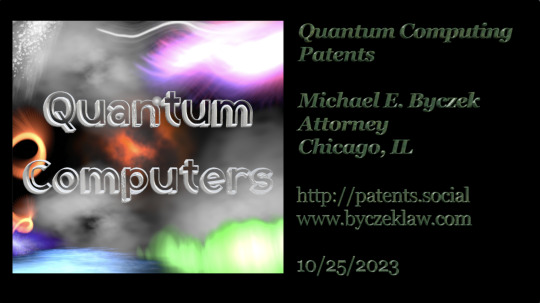
Recent quantum computing patents are reviewed by Illinois attorney Michael E. Byczek along with a brief explanation on how to classify quantum computers for a patent search. Available on YouTube at www.youtube.com/@byczeklaw or via the direct YouTube link: https://youtu.be/qBd_q7AaD5Y?si=WClBQrSwR0UjwQcy
#quantum#quantumcomputer#quantum computer#quantum computing#quantumcomputing#patent#patents#invention#invent#legal#law#attorney#byczeklaw
0 notes
Text
Quantum Cryptography: Why It's Important For Your Cybersecurity Strategy #cryptography #quantumcomputer #quantumcryptography #quantumkeydistribution #quantumsafecryptography
#Crypto#cryptography#quantumcomputer#quantumcryptography#quantumkeydistribution#quantumsafecryptography
0 notes
Text
Quantum Cryptography: Why It's Important For Your Cybersecurity Strategy #cryptography #quantumcomputer #quantumcryptography #quantumkeydistribution #quantumsafecryptography
#Crypto#cryptography#quantumcomputer#quantumcryptography#quantumkeydistribution#quantumsafecryptography
0 notes
Text
Unleashing the Power of Quantum Computing:Description
Quantum computing represents a paradigm shift in computational capabilities, harnessing the principles of quantum mechanics to perform calculations that were once thought impossible. This transformative technology has the potential to revolutionize fields ranging from cryptography and optimization to drug discovery and materials science. for more info https://delibugle.in/benefits-of-quantum-computing-innovations/
#quantumcomputing#quantumcomputer#quantummechanics#quantumphysics#quantuminformation#quantumalgorithms#quantumcryptography#quantumsimulation#quantumentanglement#quantumbreakthrough#quantumfuture#quantumrevolution
0 notes
Text

Calm view ❤🥰
Follow me for bew photo 👆👆
#artists on tumblr#trending#nature photography#photography#nature#landscape#photographers on tumblr#55mm#space#galaxies#i sell photos#quantumcomputing
28 notes
·
View notes
Text
Forward Edge-AI Isidore Quantum Get FIPS 140 3 Certification
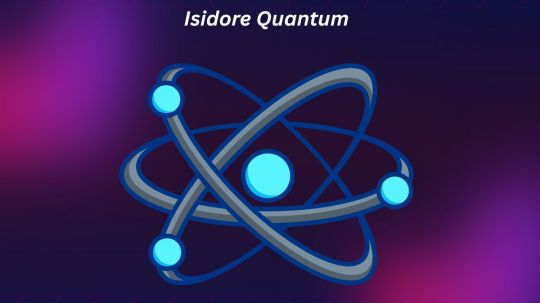
Isidore Quantum from Forward Edge-AI Gets FIPS 140-3 Compliance, Transforming Post-Quantum Encryption Isidore Quantum, Forward Edge-AI's leading encryption platform, has acquired FIPS 140-3 certification. Forward Edge-AI becomes a pioneer in the $1.2 trillion post-quantum encryption business and receives immediate access to lucrative federal and commercial contracts with this certification.
The Quantum Insider's science communicator and analyst Matt Swayne covered this breakthrough. Swayne has 12 years of expertise teaching laypeople about deep-tech and high-tech. A New Security Standard for Encryption The most rigorous NIST encryption certification is FIPS 140-3, which is more than a formality. De facto worldwide standard for cryptographic module security. Any encryption system that achieves this level of compliance must commit to tight security rules and federal legislation. After receiving this certification, Isidore Quantum is the first all-domain quantum-resistant encryption solution to be tested and validated in space, land, sea, and air. Its export eligibility under the ITAR and EAR exemptions boosts its international importance and market reach. Isidore Quantum: AI-Enhanced All-Domain Solution Isidore Quantum's innovative design uses NSA-developed cryptography frameworks. The addition of real-time machine learning is a Forward Edge-AI patent that increases this core strength. The platform's design easily incorporates modern zero-trust, AI-enhanced encryption, and CNSA Suite 2.0 compliance. This innovative solution eliminates the need for outdated Public Key Infrastructure (PKI), arduous key management methods, and human error, changing security paradigms. A secure, automatic, and flexible encryption system that can resist a changing digital environment, including quantum computing, is the result. Field-Proven and Beyond Earth The Air Force, Army, Navy, and Space Force have field-tested the Isidore Quantum platform, proving its versatility and sturdiness. These actual applications demonstrate its dependability and performance under challenging operational settings. It recently deployed aboard Rogue Space's Barry CubeSat on SpaceX's Transporter-13 mission, demonstrating its capabilities. Isidore Quantum was the first encryption module to safely reach low-Earth orbit, making this mission notable. This groundbreaking achievement confirms its reputation as an all-domain solution that may be used in the most critical scenarios. Seizing Post-Quantum Market Opportunities Isidore Quantum is FIPS 140-3-certified and procurement-ready for government, defence, and commercial sector organisations. These groups are racing to meet White House and NSA post-quantum requirements. Forward Edge-AI is well-positioned to lead worldwide post-quantum encryption adoption in finance, telecommunications, aerospace, and SCADA systems. In the public, defence, and commercial sectors, the company has identified over $700 million in pipeline demand for its solutions. This market momentum and export approval show how urgent and widespread quantum-resistant security solutions are needed. The Need for “Q-Day” The “Q-Day is coming.” signal warns the industry. The day quantum computers are expected to shatter encryption techniques, exposing critical data, is highlighted. Delaying post-quantum security is existential, not strategic. Failure to respond could expose you to quantum attackers, catastrophic breaches, and permanent data loss. Isidore Quantum is urgently needed because the deadline for preserving important data and infrastructure was yesterday. Forward Edge-AI's FIPS 140-3 compliance for Isidore Quantum secures digital communications against quantum computing threats, making it a significant business achievement and a crucial step towards post-quantum readiness.
#IsidoreQuantum#PostQuantumEncryption#NationalInstitute#NationalSecurityAgency#ai#postquantummandates#quantumcomputer#cnsa#technology#technews#news#govindhtech
0 notes
Text
100 Mind-Bending Facts About Quantum Superposition

Ever wondered how a particle can be in two places at once? Or how NASA is using quantum magic to beam entangled photons across Earth from SPACE? 🛰️✨
With this ultimate cosmic deep-dive into Quantum Superposition, your brain will never look at reality the same way again. From Schrödinger’s cat to quantum satellites, this is the quantum cheat sheet your future self will thank you for.
🔗 Read it now: https://www.jameswebbdiscovery.com/universe/100-facts-about-quantum-superposition-a-cosmic-perspective
#QuantumSuperposition#NASA#QuantumMechanics#SpaceScience#QuantumComputing#Entanglement#SciComm#JamesWebb#QuantumFuture#PhysicsFacts
11 notes
·
View notes
Text
The work shows that it is not enough to regard quantum effects as ‘instantaneous’: Important correlations only become visible when one manages to resolve the ultra-short time scales of these effects. The electron doesn't just jump out of the atom. It is a wave that spills out of the atom, so to speak – and that takes a certain amount of time. It is precisely during this phase that the entanglement occurs, the effect of which can then be precisely measured later by observing the two electrons.
9 notes
·
View notes